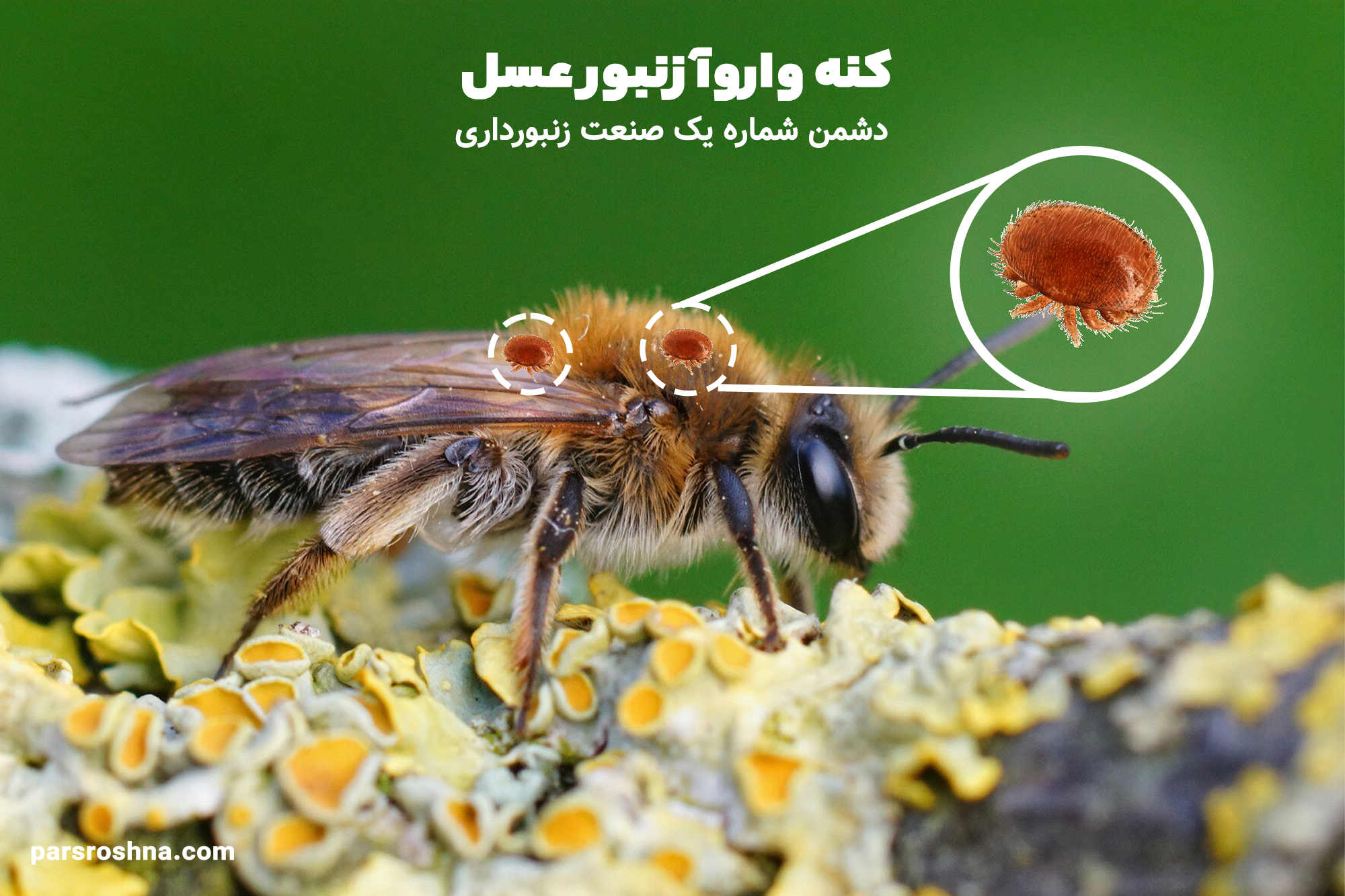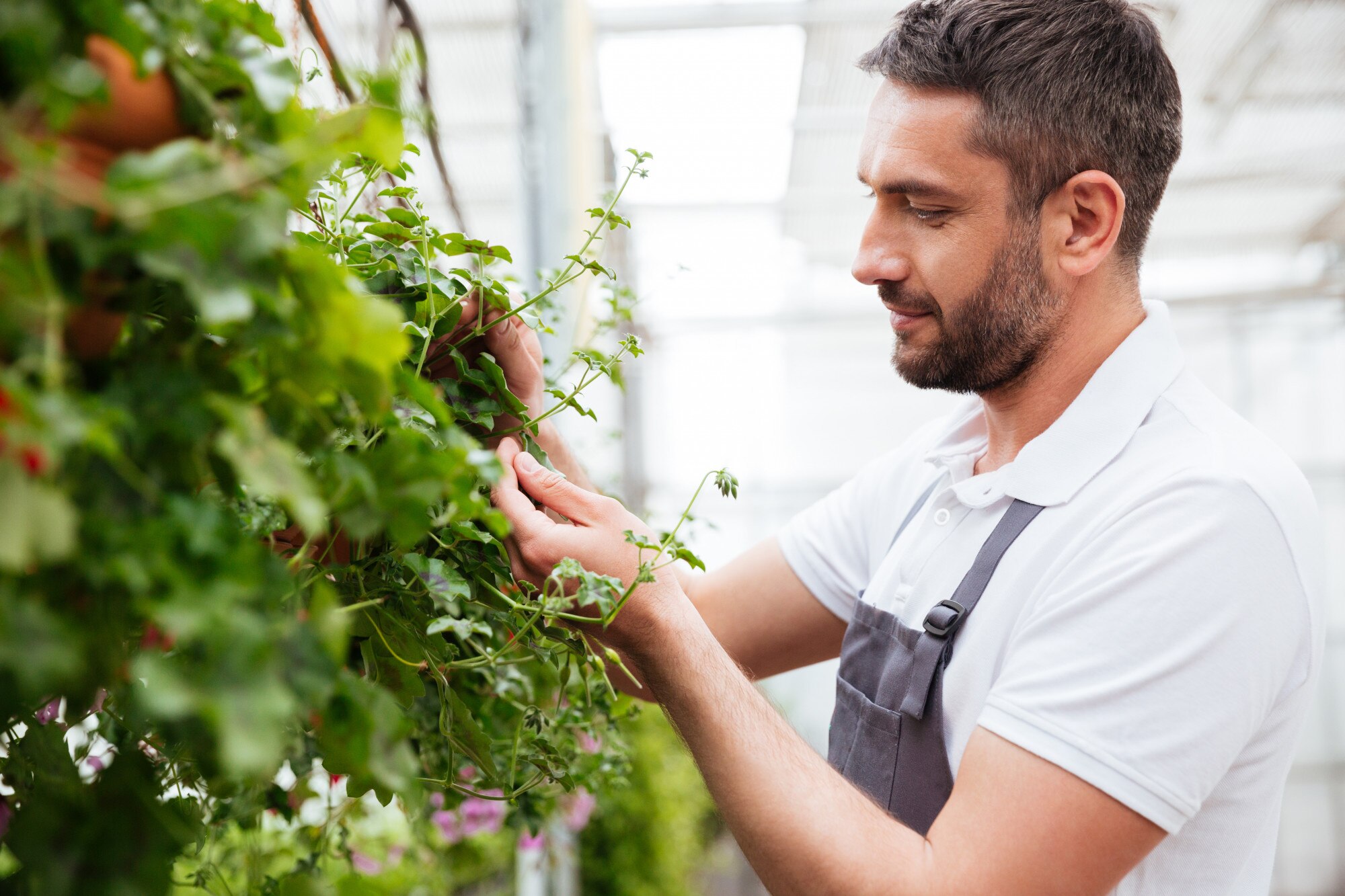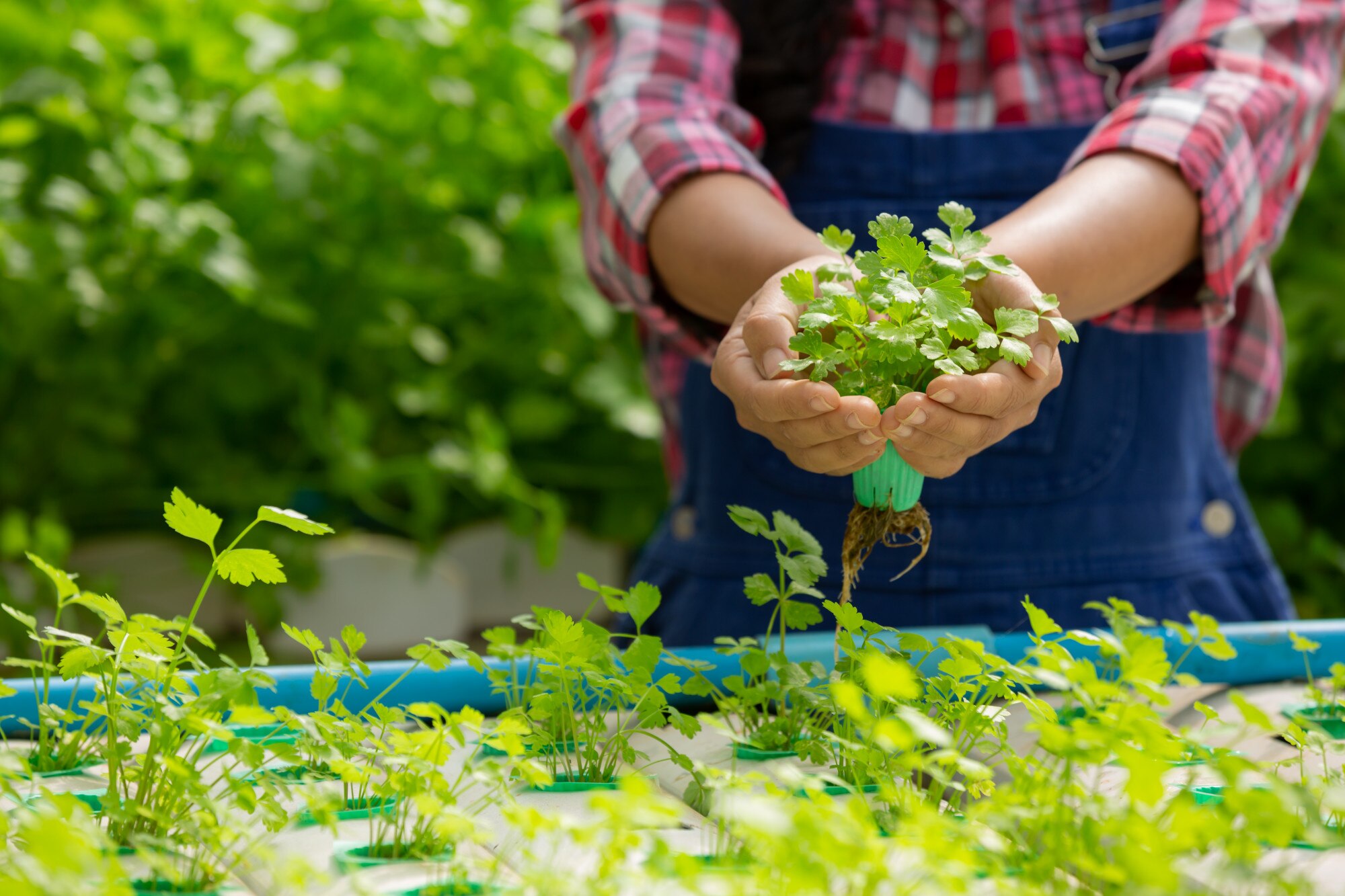What is pipe tobacco?
Tobacco pipes: For decades, as a cultural, social, and artistic component, they have attracted the attention of many people. These works of art and entrepreneurship in the field of making and consuming tobacco pipes have made them a world heritage that has countless fans around the world. Tobacco pipes are not only introduced as a means of tobacco consumption, but are also valued as a representation of art and design in the world of tobacco.
In this article, we have attempted to take a closer look at pipe tobacco, from the history and evolution of this artistic and cultural work to an analysis of the raw materials used in pipe tobacco and the process of their manufacture. We have also studied the health effects of pipe tobacco consumption compared to other tobacco products and shared important tips for responsible consumption of these products. From the experience of using pipe tobacco as an art, a lifestyle, and a less risky choice for tobacco consumption to interacting with the communities that benefit from this art, we will take you on an engaging and informative journey through the world of pipe tobacco. Join us as we embark on an unforgettable journey in-depth into the introduction of pipe tobacco.

Part 1: The History of Pipe Tobacco
Pipe tobacco is a unique work of art and history that has held a special place in various cultures around the world from past centuries to the present. For decades, these works of art have been recognized as a symbol of taste, lifestyle, and tobacco consumption, and have had a global impact. In this section, we will explore the history of pipe tobacco from its early origins to modern updates and examine its role in various economies and cultures. We will also consider the technical evolution and design of pipe tobacco throughout history.
1. Early History of Pipe Tobacco:
The history of pipe tobacco dates back to the last decades of the last century and can be attributed to one of the most important stages in the history of tobacco consumption. The first signs of tobacco use in the Americas date back to the voyages of Christopher Columbus in the late 15th century. Nicotine, the active ingredient in tobacco, was first introduced to the Americas by Columbus and his discoveries. Tobacco was introduced as an addictive substance in Europe and was quickly consumed throughout the continent.
Gradually, tobacco pipes emerged as a means of consuming tobacco and over time, they evolved into a specific art and architecture. This rich and complex history continued until the Middle Ages, gradually becoming an important element in human cultures and experiences. Tobacco pipes were recognized as a symbol of luxurious lifestyle and design taste in Europe in the 17th and 18th centuries, and their manufacturing industry reached its peak during this period. Since then, tobacco pipes have been recognized as a valuable element in modern culture and art.
2. The development of pipe tobacco in the past centuries:
Pipe tobacco has been known throughout history as a work of art and craftsmanship. The 17th and 18th centuries are known as very important periods in the development of pipe tobacco. During this period, the pipe tobacco industry grew rapidly, and specialized workshops were established in Europe and America. Pipe tobacco became an element of luxury lifestyle and art in society, using precious materials and amazing designs.
During this period, tobacco pipes were recognized as symbols of taste and artistic flourishing in contemporary life, and many designers and makers created unique works in this field. In addition to being a tool for tobacco consumption, tobacco pipes of this period had many aesthetic and artistic effects and gradually became cultural and artistic symbols.
3. Pipe Tobacco in the 20th Century:
In the 20th century, tobacco pipes became an important and attractive element in social events and gatherings. This period marked the social and cultural rise of tobacco pipes in modern society. Tobacco pipes were considered symbols of taste and a luxurious lifestyle, and their consumption at special events and gatherings was usually accompanied by celebration and ceremony. This period also saw the development of new technologies in the manufacture of tobacco pipes, as designers strived to provide the best smoking experience for tobacco pipe enthusiasts. Various types of tobacco pipes with modern designs and diverse materials were produced during this period, causing tobacco pipes to develop as a tool for tobacco consumption as well as an artistic and cultural work.
4. Modern pipe tobacco:
Today’s pipe tobacco continues to be a symbol of taste, lifestyle, and art in society. From classic and beautiful pipe tobacco designs to modern models with advanced technologies, there are many types of pipe tobacco available on the market. Pipe tobacco designers and manufacturers continue to strive to create aesthetic and artistic effects in this product, and this combination of excellent performance and beautiful design attracts pipe tobacco enthusiasts.
Today, pipe tobacco continues to be a popular choice for many people as a way to consume tobacco. Some people use pipe tobacco as a way to cut down on smoking, as it is considered to be a relatively less harmful product than cigarettes. In addition, pipe tobacco is still used at social events and gatherings as a symbol of lifestyle and taste.
Tobacco pipes are also used as an artistic and cultural product. The unique works of art created by artists and architects in the manufacture of tobacco pipes are also of interest to the art market and art collections. Today’s tobacco pipes are still recognized as a valuable cultural and artistic heritage that is appreciated and desired by culture and art enthusiasts all over the world. In the following sections of this article, we will take a deeper look at pipe tobacco and its components, its health benefits and disadvantages, and a comparison with other tobacco products. Continue reading to learn about the amazing world of pipe tobacco.

Section 2: Pipe Tobacco Raw Materials
Tobacco is considered one of the main components of pipe tobacco and has a very important impact on the taste and smoking experience. There are many different types of tobacco used, and each of them has specific characteristics that affect the experience of smoking pipe tobacco. In general, tobaccos are divided into two main categories:
Types of tobacco used in pipe tobacco
In pipe tobacco, different types of tobacco are used, and each of these types has different characteristics and flavors. Below we will mention some of the types of tobacco used in pipe tobacco:
- Virginia: Virginia tobacco is one of the most popular varieties of tobacco for pipe tobacco. It is known for its mild, grassy flavor and bright yellow leaves.
- Burley: Burley tobacco has a mild, cool flavor and darker leaves. This type of tobacco is used for blending and mixing with other tobaccos.
- Oriental: Oriental tobacco has a strong, mild flavor and aroma. This type of tobacco is often used to add depth and complexity to pipe tobacco blends.
- Perique: Perique tobacco has a spicy, pungent flavor and is commonly known as a symbol of Louisiana pipe tobacco. This type of tobacco is produced in certain areas of the state of Louisiana.
- Cavendish: Cavendish tobacco has a sweet and mild flavor and is mainly used to blend with other tobaccos and add different flavors to pipe tobacco .
- Latakia: Latakia tobacco has a smoky, dark flavor and aroma. This type of tobacco is often used to produce pipe tobacco blends.
Also, pipe tobaccos may use different blends of these tobaccos to create a variety of flavors and experiences. The choice of tobacco type for pipe tobacco comes down to personal taste and experience, and each of these types has unique characteristics and properties that appeal to pipe tobacco enthusiasts.
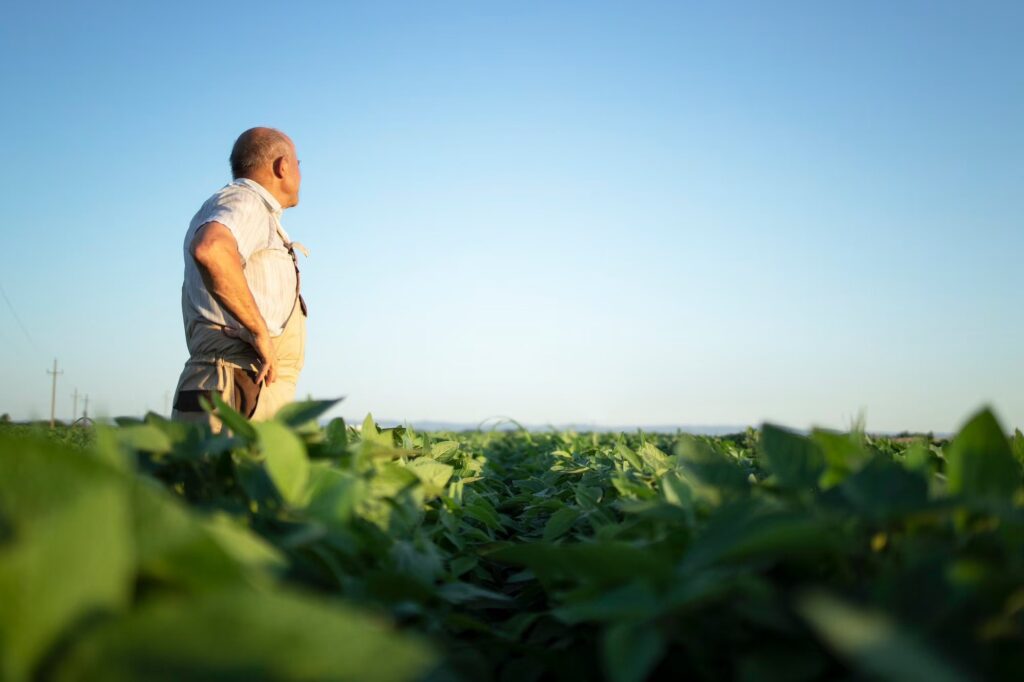
Tobacco planting methods and farming conditions
Tobacco planting methods and growing conditions are very important and have a great impact on the quality and quantity of the crop. Below we will mention some of the tobacco planting methods and growing conditions:
1. Choosing the right location :
Choosing the right location for tobacco planting is a critical factor in producing a quality crop. We should look for locations with fertile, well-drained soil where tobacco will grow ideally. Also, proper soil aeration and access to water sources for irrigation are also crucial. The selected area should have the right temperature and humidity for tobacco growth. We should also make sure that the selected areas are free from waterlogging problems and that waterlogging does not harm the tobacco growth.
In terms of pest and disease control, areas that are not directly threatened by pests that are pathogenic to tobacco are more suitable. Also, proper ventilation and economic location selection are very important. In general, the selection of a location for tobacco planting should be done carefully and with due regard to local characteristics and regional conditions to ensure the production of a quality product.
2. Planting time :
The timing of tobacco planting is also an important factor in the success of tobacco production. The science of tobacco planting Continuous experience and past observations have shown that planting time has a great influence on tobacco growth and yield. Generally, tobacco planting begins in spring. This time is suitable for tobacco because during this season temperatures increase and air humidity is suitable. The timing of tobacco planting depends on the region and local weather conditions. For each region, the right time for planting tobacco may vary.
It should also be noted that the different stages of tobacco growth require proper timing. For example, the time of harvesting tobacco leaves is also very important and must be done at the right time so that the leaves dry in the best way and the quality of the tobacco is maintained. In general, the time of planting tobacco must be carefully determined, and appropriate timing for planting, care, and harvesting tobacco should be determined according to the regional conditions and the needs of tobacco at each stage.
3. Preparing healthy seeds:
Obtaining healthy and quality seeds is a crucial step in tobacco cultivation that has a direct impact on the quality and final yield. Tobacco seeds should be obtained from reputable and reputable sources and should be free from contamination and diseases. Before planting, we should check the quality of the seeds and confirm that they are healthy and fresh. Use certified and tested seeds for planting to ensure that the tobacco plants grow in good quality and health and produce a quality crop.
4. Counting frequency :
Crop rotation, a key strategy in tobacco farming, involves alternating crops in the field to prevent diseases, pests, maintain soil health, and improve crop yields. This method helps tobacco farmers manage issues such as tobacco pests and diseases and improve soil structure. In addition, crop rotation helps reduce nutrient depletion in the soil and improve crop quality. Overall, crop rotation helps produce higher quality, healthier tobacco.
5. Proper irrigation:
Proper irrigation is one of the essential factors in tobacco cultivation that has a significant impact on the quality and final yield of the crop. Tobacco requires the right amount of water for growth and development. To achieve proper irrigation, the interval and time of irrigation must be regularly adjusted so that the soil receives enough water and problems such as over- or under-irrigation are prevented. It is also very important to choose the most appropriate irrigation method for the desired area and the correct irrigation timing. By using appropriate approaches in irrigation, tobacco yield can be improved and more optimal water consumption can be ensured. In general, proper irrigation helps to produce quality and healthier tobacco.
6. Pest and disease control:
Pest and disease control in tobacco cultivation is of great importance to ensure optimal performance and quality production. Identification and diagnosis of pests and diseases, when they are identified at an early stage, can prevent further damage and take appropriate measures to control them. Among the effective methods for controlling pests and diseases are the use of biological methods and chemical pesticides. Also, setting a proper schedule for controlling and conducting regular monitoring of tobacco plants is of particular importance. Using a systematic management to control pests and diseases also helps to improve the overall performance of the tobacco cultivation process . Therefore, paying attention to pest and disease control is essential for producing quality and healthier tobacco.
7. Timely operation:
Timely exploitation of tobacco plants is very crucial in the process of cultivation and cultivation of this crop. This exploitation includes proper timing for planting, careful monitoring and care of the plants, appropriate harvesting time, and timely processing of tobacco. Planting time should be determined according to the conditions of the cultivation site and weather variables to ensure optimal growth of tobacco plants. Also, regular monitoring of plants and timely management of pests and diseases should be done.
Harvesting time should also be determined at the right moment to market a quality product, and after harvesting, timely processing of tobacco is essential to maintain quality. Resource and equipment management should also be done carefully to ensure trouble-free operation and to produce a quality final product. In general, timely operation is of great importance to ensure the successful tobacco cultivation process and minimize losses.
8. Drying tobacco:
Tobacco drying is a key step in the tobacco processing process that directly affects the quality and final characteristics of the tobacco. In this step, the moisture in the tobacco leaves is removed to make it dry and suitable for various uses. There are various methods for drying tobacco, including natural (sun) drying, drying using mechanical equipment such as tobacco dryers, and drying using various heating systems. When the tobacco is dried, it must be carefully controlled to prevent over- or under-drying of the product.
This step is very important because the final quality and taste of the tobacco is directly related to the method and accuracy of drying. Also, from a health perspective, the importance of drying tobacco in reducing moisture content and preventing the formation of fungi and bacteria in the product is also very vital. In general, drying tobacco is one of the important steps in producing quality and acceptable tobacco and is carried out carefully and using appropriate methods.
9. Seed collection:
Tobacco seed collection is one of the most important steps in the cultivation and breeding process of this crop, which has a direct impact on the quality and future yield of tobacco. Tobacco seeds must be collected carefully and at the right time. The collection time is usually after the flowering period and the formation of seed capsules in tobacco plants. It is of particular importance to select healthy seeds without signs of contamination or diseases. After collection, the seeds must be dried in a timely manner to reduce their moisture content and prevent seed decay and decomposition. Finally, the collected seeds must be stored in appropriate conditions so that they are ready for the next planting. Therefore, tobacco seed collection is of great importance to provide farmers and producers in the tobacco industry with quality and healthy seeds.
10. Natural resource management:
Natural resource management in tobacco cultivation is a vital aspect of agriculture that has a great impact on crop quality and environmental protection. In this regard, optimal water consumption and careful irrigation management, maintaining soil quality using sustainable agricultural methods, controlling chemicals such as fertilizers and pesticides, proper waste management, and preventing environmental pollution are among the measures that should be taken in natural resource management in tobacco cultivation. These measures not only contribute to higher productivity in tobacco production, but also help maintain the balance of the ecosystem and prevent pollution of natural resources.
In general, tobacco cultivation requires careful care and management to produce a quality product and healthy tobacco leaves. Arrangement and observance of agricultural principles in tobacco production are prerequisites for success in this industry.
Main tobacco varieties such as Virginia, Burley and Oriental
There are many different types of tobacco, each with its own unique characteristics and flavors. Here are the three main types of tobacco: Virginia, Burley, and Oriental:
- Virginia Tobacco :
- Flavor and Aroma : Virginia tobaccos usually have a good flavor with fairly sweet and mild notes. This type of tobacco has a fragrant aroma that may be cool and fruity.
- Uses : Virginia is most commonly used as roast tobacco (for cigarettes and pipes) and leaf tobacco (for hand-rolled cigars).
- Burley Tobacco :
- Flavor and Aroma : Burley tobacco usually has a relatively mild and cool flavor. This type of tobacco has a brownish flavor and semi-sweet notes.
- Uses: Burley is used as a roasting tobacco for pipe tobaccos and foreign cigarettes (foreign cigarettes without filters). It is also used in the preparation of roasted tobaccos.
- Oriental Tobacco :
- Flavor and Aroma: Oriental tobaccos have a varied flavor and aroma, usually semi-sweet to semi-pungent. These tobaccos may have aromatic notes such as tobacco and spice.
- Applications: Oriental tobaccos are used as roasting tobaccos for the production of pipe tobaccos and hand-made cigarette tobaccos. This type of tobacco is very popular for the production of pipe tobaccos with different qualities and flavors.
Each of these tobacco types has unique characteristics, and choosing the right type of tobacco depends on the taste and consumer preferences.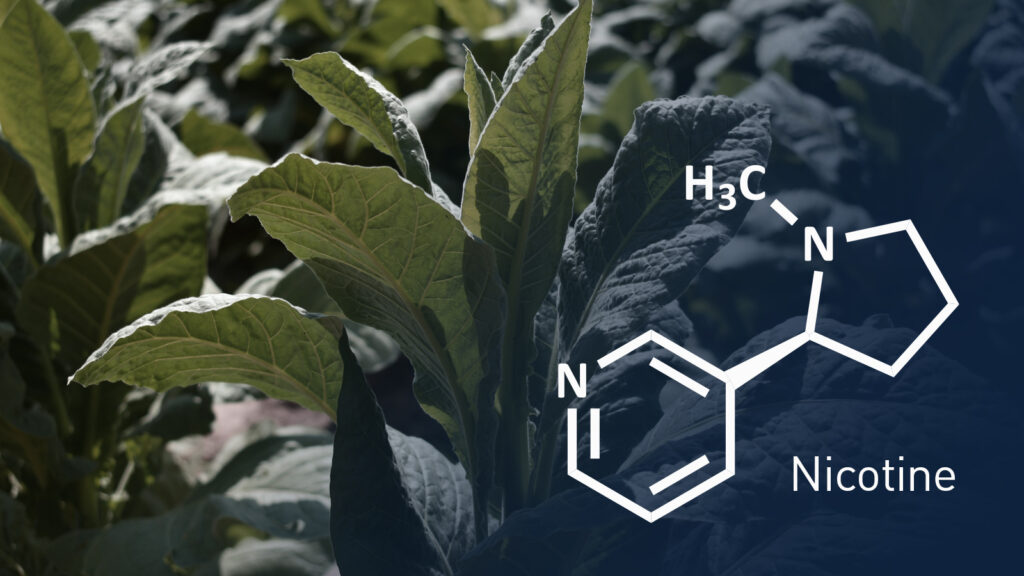
Nicotine: Effects of nicotine on human health
Nicotine is one of the main components of tobacco, which is known as an addictive and stimulating substance. This substance enters the human body through the use of tobacco, cigarettes, pipes, and other tobacco products and has numerous effects on human health. The following are some of the effects of nicotine on human health:
1. Nicotine is an addictive substance :
Nicotine, as one of the main components of tobacco and tobacco products, is known for its addictive nature. This stimulant is sent to the brain and has numerous effects on human health. Nicotine addiction can occur physically and psychologically, and repeated use leads to the development of a tolerance to nicotine and the need to consume more. In addition, nicotine-containing compounds pose serious health risks. For people who are dependent on nicotine, quitting can be challenging and require counseling and support. Therefore, it is important to be aware of the addictive effects of nicotine and be able to manage its use.
2. Effect on the cardiovascular system:
The effects of nicotine on the cardiovascular system are a very important aspect of studies related to the use of tobacco and tobacco products. Nicotine, a powerful stimulant, enters the human body as a result of the use of tobacco and tobacco products and has a variety of effects on the cardiovascular system. These effects include increased heart rate and increased blood pressure. Increased heart rate may be dangerous for people with weak hearts and puts a lot of strain on the heart and blood vessels.
Also, nicotine use may act as a temporary sedative and reduce feelings of calm and stress, which can encourage repeated nicotine use. These negative effects on a person’s cardiovascular health and increase the risk of heart disease such as angina and heart attack. Therefore, it is very important to avoid tobacco and tobacco products to protect the health of our cardiovascular system.
3. Effect on breathing:
Nicotine, which is present as the main component of tobacco and tobacco products, has many effects on the human respiratory system. One of the main effects of nicotine is bronchial constriction, which causes difficulty in breathing and labored breathing. Also, nicotine can increase lung secretions and reduce the quality of breathing. For people who suffer from respiratory problems such as asthma and bronchitis, the effects of nicotine are especially significant. Also, smoking cigarettes and tobacco, which have nicotine as one of the main components, can lead to exacerbation of respiratory problems and even chronic respiratory diseases. Therefore, compounds containing nicotine are very important and considered for maintaining respiratory health and all body organs, and it is recommended to refrain from using tobacco and tobacco products.
The amount of nicotine in pipe tobacco and its effect on users
The amount of nicotine in pipe tobacco depends on several factors, including the type of tobacco, how it is grown, and the manufacturing process. Different tobaccos may contain different amounts of nicotine. These differences can have a direct impact on the user experience.
For pipe tobacco users, the amount of nicotine in the tobacco blend is important because the amount of nicotine consumed and the blend of tobacco affect their experience and addiction. Individuals should pay close attention to the amount of nicotine in their pipe tobacco and manage their consumption carefully to avoid potential health problems and safely control their nicotine intake.
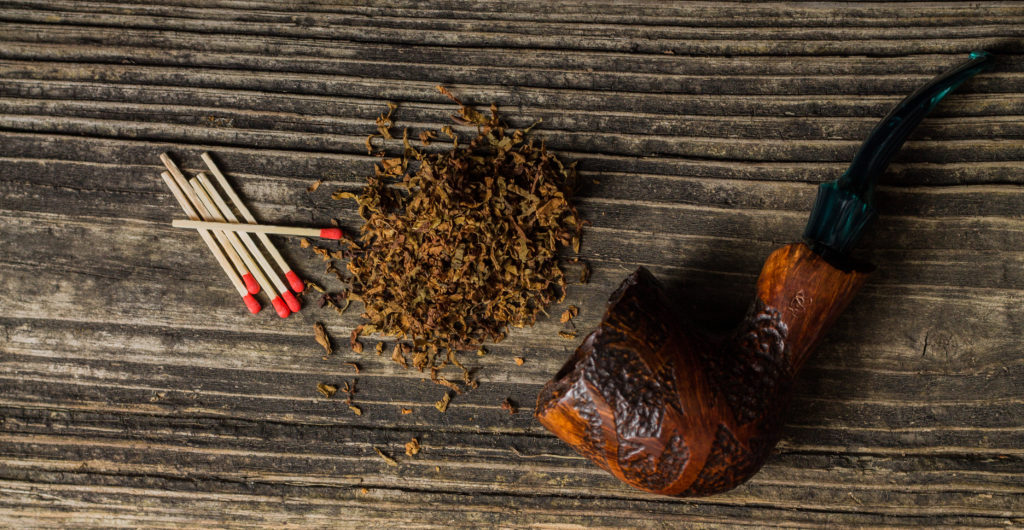
Section 3: Pipe Tobacco Processing Methods
Pipe tobacco , as a tobacco product, requires processing and preparation before it can be offered to consumers. In this section, we will discuss some of the pipe tobacco processing methods, which include various steps from tobacco selection to the production of the final product.
Pipe making methods
Pipe making is a meticulous and artistic process that is done using a variety of methods. In this section, we will discuss the two main methods of pipe making , namely the traditional, manual pipe-making method and the machine-made pipe-making process.
Traditional and manual methods of making pipes:
In traditional, hand-made pipe making methods, skilled artists and craftsmen use their hands to create beautiful and unique pipes. This process involves the following steps:
- Choosing the right wood : At this stage, the right wood is selected for making the pipe. Choosing quality wood with specific characteristics is very important for making pipe tobacco.
- Carving and Design : In this step, tobacco artists carve various patterns and designs onto the wood. These designs may include motifs, shapes, and artistic designs.
- Making pipe tobacco parts : The various parts of a pipe tobacco, such as the mouthpiece, chimney, and cone, are made by artists using hand tools and specialized techniques.
- Assembling the parts : In this stage, all the manufactured parts are combined together to form a complete pipe.
The process of making pipe tobacco using machinery:
With the advancement of technology, it is also possible to produce pipe tobacco using machinery. These methods are carried out industrially and on a mass scale and include the following steps:
- Decorating and making molds : In this stage, various molds are produced for decorating and making pipes. These molds may be used to create designs and patterns on the tobacco of the pipes.
- Machined Parts : Various parts of the tobacco pipe are produced using machinery. This stage includes cutting wood, precise engraving, and manufacturing various machined parts.
- Pipe tobacco assembly and finishing : Pipe parts are assembled using machinery and finished pipes are produced.
Both manual and machine-made pipe production methods have their own unique characteristics and advantages. The manual method is renowned for the artistry and precision of the artisans’ hands, and produces pipes of high artistic value. In contrast, the machine-made method results in mass production and lower prices. The choice of production method depends on various factors, including the intended market, the quantity of production, and the desired quality.

Nicotine production process:
Extracting nicotine from tobacco is an important process in the production of pipe tobacco. This step is done to separate nicotine from other tobacco ingredients and purify it for use in pipe tobacco. Below, we describe the steps of extracting nicotine from tobacco:
- Tobacco preparation : In this stage, the tobacco is cut into smaller pieces. These cuts may be in the form of tobacco leaves. The prepared tobacco is then processed to extract nicotine.
- Using a solvent : One of the methods of extracting nicotine is using a solvent. Usually, alcohol or water is used as the solvent. Tobacco is placed in the solvent to separate the nicotine from the tobacco.
- Nicotine extraction : In this step, the solvent is combined with the tobacco and the nicotine is extracted from the tobacco. This process may be done using heat and pressure or cold extraction. The main goal of this step is to separate the nicotine from other tobacco ingredients and convert it into a nicotine solution.
- Nicotine Purification : After nicotine extraction, nicotine may contain impurities. In this step, nicotine is purified and refined to remove impurities and undesirable components. This step is to produce pure and quality nicotine.
- Solvent evaporation : In the final step, the solvent used (such as alcohol or water) is evaporated from the nicotine to obtain pure nicotine. This step is done to separate the nicotine from the solvent and obtain pure nicotine ready for use in pipe tobacco.
Extracting nicotine from tobacco is a delicate and important process that affects the final quality of pipe tobacco. Careful attention to all stages of nicotine extraction and purification is important to ultimately produce high-quality, pure nicotine for use in pipe tobacco.
Nicotine processing:
Nicotine processing is the most important step after extraction from tobacco, which is carried out in order to purify nicotine from impurities and transform it into a stable, quality product for use in pipe tobacco. Below, we have explained the steps of nicotine processing:
- Primary purification of nicotine : In this stage, the nicotine extracted from tobacco is subjected to primary purification through operations such as filtration or purification. The aim of this stage is to remove impurities and low-quality particles from the nicotine.
- Nicotine purification and refining : In this step, nicotine as a raw product is purified and refined. This step involves the use of specific chemicals or physical processes that separate nicotine from impurities. The nicotine must be purified and free of any harmful compounds.
- Nicotine Carbonate : In this step, nicotine is converted to carbonate (powdered nicotine). This step is done to increase the stability of the nicotine and make it easier to mix with pipe tobacco.
- Testing and Quality Control : Samples of nicotine after processing must undergo quality tests. These tests include measuring nicotine levels, determining impurity levels, and determining nicotine taste and odor characteristics.
- Nicotine Packaging : After purification and quality control, nicotine is typically packaged in special, protective packaging to protect it from light and moisture. Different packaging may be used to package the final nicotine product that is added to pipe tobacco.
The process of extracting nicotine from tobacco is carefully carried out to produce high-quality, pure nicotine for use in pipe tobacco. These steps are crucial to the quality of the final pipe tobacco and its impact on consumers.
Purification and refining of nicotine for use in pipe tobacco:
Purification and refining of nicotine for use in pipe tobacco is a crucial step in the production of pipe tobacco. In this step, the main goal is to purify the nicotine from any impurities and undesirable components to ultimately produce high-quality and pure nicotine for use in pipe tobacco.
- Initially, the nicotine extracted from tobacco undergoes primary purification, such as filtration or pressure regulation, to remove impurities and low-quality particles from the nicotine.
- Next, refining chemicals are added to the nicotine. These may act as solubilizers or impurity absorbers. This step is used to adjust and optimize the properties of the nicotine.
- After refining and characterizing, the nicotine undergoes various refining and characterizing processes. This stage includes refining to separate nicotine from impurities and to regulate its nicotine content, taste, and odor.
- After purification and quality control, samples of the nicotine are tested to confirm the final quality and purity of the nicotine used in the pipe tobacco. The nicotine is then packaged in special, protective packaging to protect it from light and moisture, ready for use in pipe tobacco. These steps are crucial to ultimately producing high-quality, pure nicotine for use in pipe tobacco, positively impacting the consumer experience.
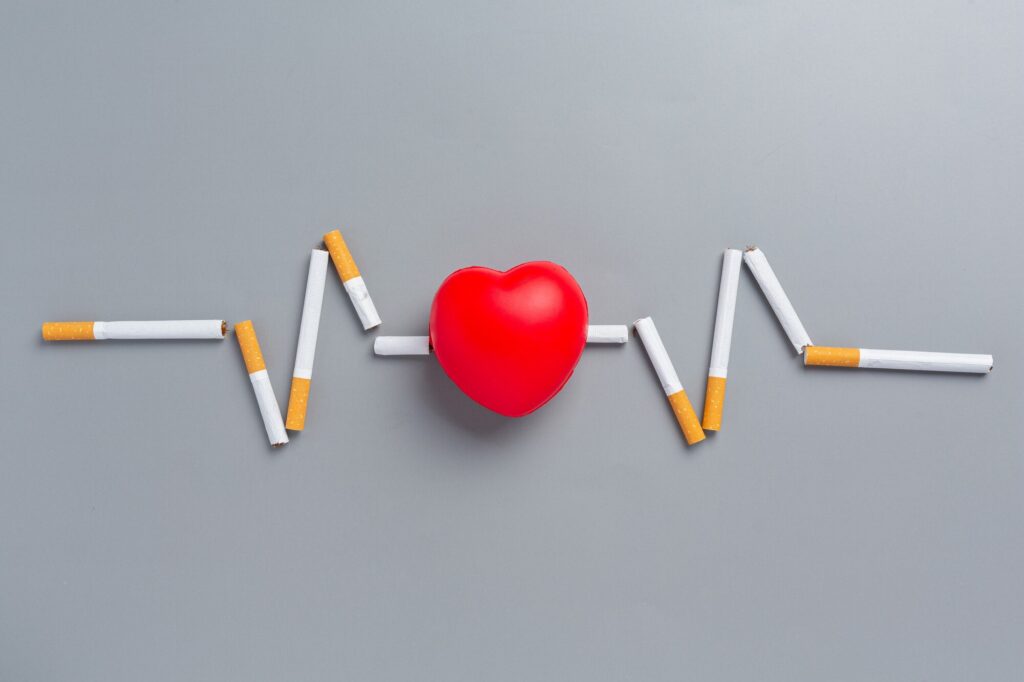
Section 4: Health Benefits of Pipe Tobacco
Pipe tobacco is a tobacco product with a long history and is popular among tobacco users. This article examines the health benefits of pipe tobacco and suggests that with proper management and moderate use, pipe tobacco may be a less hazardous alternative to other tobacco products.
Comparison of pipe tobacco and cigarettes in terms of negative health effects :
- Nicotine content : Pipe tobacco usually contains a lower amount of nicotine than cigarettes. This means a lower chance of nicotine addiction and fewer negative health effects for users.
- Smoke production : Pipe tobacco produces less smoke than cigarettes. This means reduced exposure to harmful compounds found in cigarette smoke and can help improve respiratory health.
- Control of intake : Pipe tobacco is usually best suited for experienced users. This means that people can carefully control the amount of nicotine they consume and use as much as they want. This control of intake can help reduce the risks associated with nicotine use.
Reducing the risks associated with smoking with pipe tobacco :
- Reduces exposure to smoke : One of the main risks associated with smoking is exposure to harmful smoke. Pipe tobacco produces less smoke than cigarettes, which can help reduce exposure to harmful compounds in smoke.
- Reduced nicotine consumption : Pipe tobacco usually contains lower levels of nicotine. This means reduced nicotine consumption and fewer harmful effects of nicotine on the health of users.
- Moderate use : Pipe tobacco helps users closely control their nicotine intake and keep their consumption moderate. This can help reduce the likelihood of addiction and related problems.
As a result, pipe tobacco can be considered a less risky option than cigarettes, but it should be noted that the use of any tobacco product is associated with risks and health problems. It is always best to use any tobacco product with medical advice and attention to the amount of consumption, and if possible, it is preferable to reduce consumption.
Help reduce stress and anxiety:
Pipe tobacco and nicotine may be used as a tool for reducing stress and anxiety for some people. This section examines the role of pipe tobacco in managing stress and anxiety and the impact of nicotine on psychological and mental functioning.
The role of pipe tobacco in managing stress and anxiety:
- Relaxing experience : Some people find pipe tobacco to be a relaxing experience. Activities associated with pipe tobacco may help people reduce everyday tension and stress.
- Combine with moments of relaxation : Some people find pipe tobacco to be a moment of relaxation during the day. These moments can help reduce stress and anxiety, allowing people to escape from everyday life and find peace.
The effect of nicotine on mental and physical performance:
- Stimulation and energy : Nicotine is considered a stimulant, and its use may make people feel more energetic and focused. This effect can help reduce feelings of fatigue and drowsiness.
- Effects on mood : Some people may feel a sense of elation and happiness after using nicotine. This effect may help reduce anxiety and increase feelings of contentment.
- Effects on concentration and attention : Nicotine can temporarily increase concentration and attention. This may help people cope better with everyday tasks or problems.
However, it should be noted that nicotine also has side effects and health risks. Relying on pipe tobacco as a tool for managing stress and anxiety should be done carefully, paying attention to the amount of use and its effects on health . Also, other ways to manage stress and anxiety, such as exercise, meditation, or psychological counseling, should be considered.

Section 5: Risks and Precautions of Pipe Tobacco Use
Pipe tobacco , like other tobacco products, poses health risks. This section discusses the negative effects of excessive pipe tobacco use, nicotine addiction and related problems, and the potential for respiratory diseases and other health problems.
Negative effects of excessive pipe tobacco use:
- Increased nicotine consumption : Excessive use of pipe tobacco can lead to increased nicotine consumption, which can lead to increased nicotine addiction and decreased health.
- Negative effects on the respiratory system : Excessive use of pipe tobacco may result in harmful compounds in tobacco smoke entering the lungs, which can increase the risk of respiratory diseases such as craniosynostosis and chronic obstructive pulmonary disease (COPD).
Nicotine addiction and related problems :
- Increased likelihood of addiction : Nicotine is an addictive substance, and excessive use of pipe tobacco can lead to increased nicotine addiction. Nicotine addiction can lead to physical and mental problems.
- Headaches and sleep disturbances : Nicotine addiction may lead to sleep disturbances and headaches, affecting the quality of daily life.
Possibility of respiratory diseases and other health problems:
- Respiratory diseases : Pipe tobacco use may increase the risk of respiratory diseases such as lung cancer and bronchitis.
- Heart problems : Nicotine can negatively affect the cardiovascular system, causing high blood pressure and increasing the risk of heart problems.
- Effects on the mouth and teeth : Pipe tobacco use may increase the risk of oral and dental problems, such as oral infections and cavities.
- Effects on the skin : Tobacco smoke may lead to increased skin dryness and premature aging.
As a user, you should be cautious and manage your pipe tobacco use, and it is best to consult a doctor and try to reduce your intake of nicotine and harmful tobacco compounds. Also, if you experience any symptoms or health problems related to pipe tobacco use, you should see a doctor to receive proper diagnosis and treatment.
Precautions and guidelines related to responsible consumption:
- Controlling nicotine and pipe tobacco consumption :
- Try to limit your use of nicotine and pipe tobacco to the minimum possible.
- Avoid daily and continuous use of pipe tobacco.
- Avoid pipe tobacco with high nicotine levels and tobacco products that are blended with raw tobacco.
- Advice and support :
- If you are planning to reduce or quit using pipe tobacco, it is best to seek medical advice or, as an option, join support groups.
- Pay attention to health symptoms :
- If you have any symptoms or health problems related to pipe tobacco use, such as breathing problems, chronic cough, bleeding from the mouth, or other symptoms, see your doctor immediately.
Tips to reduce the risks of pipe tobacco use:
- Quitting : The best way to reduce the risks of pipe tobacco use is to quit completely. If possible, gradually wean yourself off nicotine with the help of consistent, integrated counseling.
- Healthy diet : Pipe tobacco use may lead to complications for oral health and the digestive tract. Maintaining a healthy diet and oral hygiene can be helpful in reducing the risks associated with pipe tobacco.
- Exercise and sports : Exercise and fitness activities can help as a way to reduce the negative health effects of pipe tobacco use.
- Teeth and Gum Care : Regular dental and gum care and regular dental checkups with a dentist can help reduce oral problems associated with pipe tobacco use.
- Health monitoring : In order to monitor your health, you should undergo medical checkups and tests and follow your doctors’ recommendations to maintain and improve your health.
By adhering to these principles and following health care guidelines, you can minimize the risks of pipe tobacco use and maintain your health.

Section 6: Comparing Pipe Tobacco with Other Tobacco Products
6.1 Comparing pipe tobacco to cigarettes
Health effects:
One of the important things in comparing pipe tobacco and cigarettes is the negative effects on human health.
- Comparison of the negative effects of cigarettes and pipe tobacco on human health : Smoking is known to be one of the main causes of respiratory diseases such as lung cancer and chronic obstructive pulmonary disease (COPD). Cigarette smoke contains harmful substances such as tar and high nicotine, which are very harmful to health. In contrast, pipe tobacco produces somewhat less smoke, which can help reduce the risk of respiratory diseases.
- Comparing cardiovascular effects : Smoking also raises blood pressure and increases the risk of cardiovascular problems. In contrast, pipe tobacco generally contains lower amounts of nicotine, which may help reduce these risks.
Nicotine:
- Comparison of nicotine levels in cigarettes and pipe tobacco and their effects on addiction and health : Cigarettes usually have a higher nicotine content than pipe tobacco. Nicotine is an addictive substance, and nicotine use in both cases may lead to addiction. However, using pipe tobacco with lower levels of nicotine may help people become less dependent on nicotine.
Help to quit smoking:
- Pipe tobacco as a tool to help people quit smoking : Some people use pipe tobacco as an alternative tool to help them quit smoking. This can help people go through the process of quitting smoking with a less harmful product with lower amounts of nicotine.
However, it is important to note that both pipe tobacco and cigarettes pose health risks, and for those who decide to reduce their tobacco use, medical advice and regular follow-up are important. Also, making responsible and sensible choices about tobacco use can help maintain personal health.

Section 6.2: Comparison with hookah tobacco
Main ingredients:
- Comparison of the main ingredients in pipe tobacco and hookah tobacco, including nicotine and types of tobacco : In hookah tobacco, the main ingredients include tobacco, the smoke of which contains only tobacco. This type of pipe usually has high levels of nicotine and is known as a tobacco product. In contrast, pipe tobacco can be different and, in addition to tobacco, may also include other ingredients such as flavorings and tobacco additives. Also, pipe tobacco usually has lower levels of nicotine than hookah tobacco .
Health effects:
- Comparing the health effects of hookah and pipe tobacco use on respiratory and cardiovascular health : Both types of tobacco products can harm respiratory and cardiovascular health. Since hookah tobacco contains only tobacco and its smoke is rich in nicotine, its use may increase the risk of respiratory diseases such as lung cancer and chronic obstructive pulmonary disease (COPD). It can also have negative effects on the heart and blood vessels.
- In contrast, pipe tobacco typically contains lower levels of nicotine and may produce the least amount of smoke. This may help reduce the risk of respiratory diseases and may be less hazardous than hookah tobacco.
However, it should be noted that both hookah tobacco and pipe tobacco carry health risks, and caution and adequate information are recommended when using either. Also, medical advice and informed decision-making are the best way to choose the type of tobacco you use.

Section 6.3: Comparison with electronic cigarette versions (vapes)
Raw materials:
- Comparison of the ingredients in pipe tobacco and t-cigarettes, including nicotine and other addictive substances : Pipe tobacco usually contains tobacco and varying amounts of nicotine. In contrast, a vape is an electronic device that has the nicotine in a special liquid known as a “nicotine vaping liquid.” This nicotine vaping liquid is produced as a vapor . The main difference is that e-cigarettes have less smoke and addictive substances than pipe tobacco.
Mechanism of action:
- A brief explanation of how a vape works compared to pipe tobacco : A vape is an electronic device that converts nicotine into vapor by drawing electricity from a battery. This vapor is then inhaled by the user. This process is done without creating smoke and through a vapor that delivers the nicotine.
In contrast, pipe tobacco uses the burning of tobacco and the production of smoke to deliver nicotine. This smoke contains nicotine and other addictive substances and is inhaled and absorbed by the user.
Given these differences, vaping is largely reduced in smoke and addictive substances and is being touted as a less harmful alternative to nicotine consumption. This makes it possible for people looking to reduce the risks of tobacco use to turn to vaping. However, there is still a need for careful study and research into the long-term health effects of vaping and its impact on nicotine addiction.
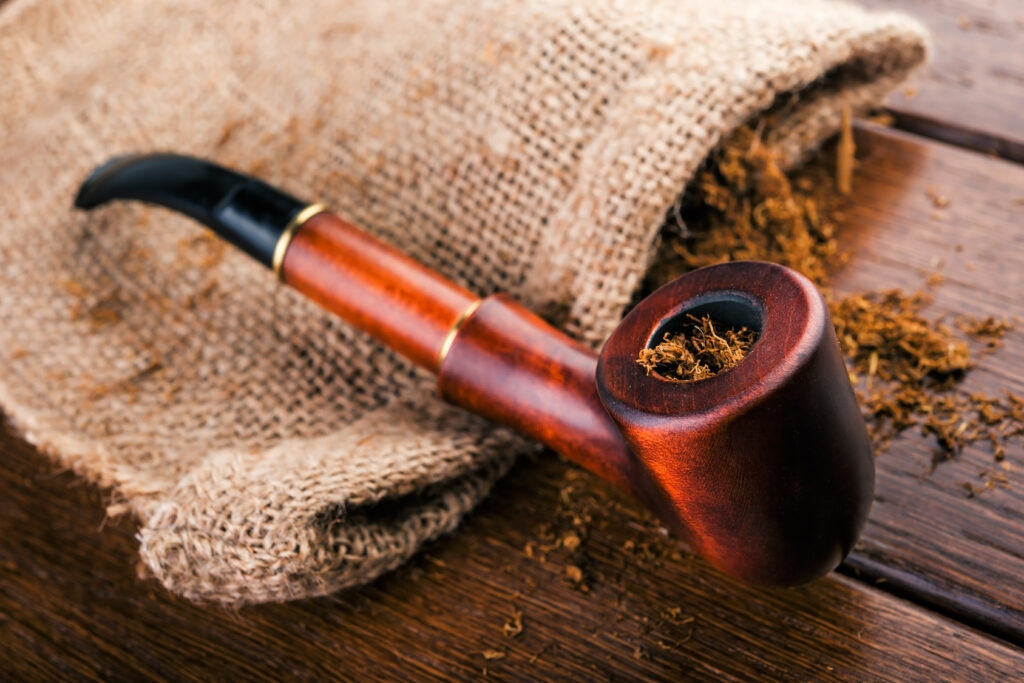
Conclusion
In an article that studied the history, raw materials, production methods, health effects, risks, and comparison of pipe tobacco with other tobacco products, pipe tobacco was introduced as a tobacco product with its own diversity and history. In this article, we discussed the advantages and disadvantages of using pipe tobacco.
Pipe tobacco can help reduce the symptoms associated with smoking, create a calm and study-like experience, and help reduce stress and anxiety. However, the product still carries some health risks, including nicotine addiction and the potential for respiratory illnesses.
The importance of choosing a tobacco product responsibly based on consumer needs and information cannot be overemphasized. Individuals should carefully consider the pros and cons of each type of tobacco product and make their decision with sufficient knowledge and consideration for their health. Also, medical advice and follow-up with addicts play a vital role.
In general, pipe tobacco is a tobacco product with a great history and variety that should be consumed with sufficient awareness and information, and decisions about its consumption should be made according to personal needs and health.








